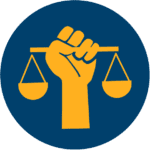Charles Brennan provided testimony in support of House Bill 24-1129, Protections for Delivery Network Company Drivers. CCLP is in support of HB24-1129.
Recent articles
CCLP testifies in support of TANF grant rule change
CCLP's Emeritus Advisor, Chaer Robert, provided written testimony in support of the CDHS rule on the COLA increase for TANF recipients. If the rule is adopted, the cost of living increase would go into effect on July 1, 2024.
CCLP testifies in support of updating protections for mobile home park residents
Charles Brennan provided testimony in support of House Bill 24-1294, Mobile Homes in Mobile Home Parks. CCLP is in support of HB24-1294.
CCLP’s legislative watch for April 5, 2024
For the 2024 legislative session, CCLP is keeping its eye on bills focused on expanding access to justice, removing administrative burden, preserving affordable communities, advocating for progressive tax and wage policies, and reducing health care costs.
A Better Budget: Preserve funding civil legal-aid funding

President Donald Trump calls his proposed budget for fiscal year 2018, “A New Foundation For American Greatness.” Alternately dubbed the “taxpayer-first budget,” the document proposes $3.6 trillion in cuts over 10 years – largely at the expense of education, health care, housing and services that give low-income individuals and families a chance to maintain financial security – while decreasing taxes for the wealthy.
As Congress considers the proposals under the Trump budget, we at Colorado Center on Law and Policy believe that a true foundation for “American greatness” begins with policies that invest in struggling Americans. To that point, we are publishing a series of analyses entitled, “A Better Budget,” which will examine the importance of programs targeted for reduction or elimination under the Trump budget. We will then outline how policymakers can strengthen – not undermine – the nation’s safety net while building an inclusive, fair and just economy that reflects our American ideals and puts more Americans on a path toward self-sufficiency.
Part Four of the series examines the proposed elimination of the Legal Services Corp., a federally funded entity that provides legal aid resources for those who otherwise could not afford to pay for a lawyer.
Access to justice is a founding principle of our republic. In fact, every day across this country when school children, public officials and millions more recite the Pledge of Allegiance, they reaffirm that the United States of American stands for liberty and justice for all.
Yet, the reality is that many people must face pressing legal problems alone without an attorney at their side when what they hold most dear is at stake. Every day, people face the break-up of their families, the loss of their children, bankruptcy from medical debt or loss of their home without legal representation.
Civil legal aid helps ensure fairness for all people in the justice system, regardless of how much money they have. It helps people protect their livelihoods, their health and their families when faced with government attorneys, banks and other well-represented parties.
What is the LSC?
Established in 1974 with broad bipartisan support, Legal Services Corporation (LSC) is a federally funded entity that helps Colorado Legal Services (CLS) provide lawyers to represent people who are below the eligibility threshold of 125% of the Federal Poverty Level. CLS has attorneys in offices throughout Colorado. It receives 40 percent of its funding from LSC.
That funding doesn’t just help low-income people. CLS provides self-help resources, online resources to anyone who needs it through forms written in plain language, volunteer lawyers, legal clinics and referral services. CLS brings to life the promise of justice for all.
Proposed cuts
President Trump’s budget proposes to eliminate the LSC, currently funded at $385 million. Were that to happen, CLS would need to remove attorneys in some rural offices where there are no other options for people who need help. Eliminating LSC and forcing such a dramatic reduction in access to justice is a drastic change from decades of bipartisan support for civil legal aid. Colorado’s Republican Attorney General, Cynthia Coffman joined Massachusetts Attorney General in a letter to U.S. Senate budget-writers opposing the elimination of funding for Legal Services Corp. The letter was signed by 32 attorneys general from both parties.
Although Trump’s proposed budget for fiscal year 2018 isn’t carrying the day, the House Appropriations Committee has approved a 25 percent cut in LSC funding, which would mean a $1.1 million loss for CLS. The Senate Appropriations Committee has approved level funding for next year, but the final LSC budget will require agreement between the House and the Senate.
Any cut in LSC funding would be devastating for low-income Coloradans with serious civil legal problems. The current funding level is already $50 million below the 2010 budget while the eligibile population has increased and their legal needs have become more complex. Even at current funding levels, CLS is forced to turn away at least one income-eligible Coloradan for every Coloradan served due to inadequate resources. CLS is the only agency in the state that provides free legal services in civil cases to indigent clients in every Colorado county. The organization has only 51 lawyers on staff to serve an income-eligible population of more than 800,000.
Access to justice is not a partisan issue and it should not depend on how wealthy you are. The veterans, military families and people with disabilities attempting to secure important benefits, survivors of domestic violence seeking safety, and families facing foreclosure or displacement by natural disasters come from across the political spectrum. Without the assistance of an attorney to navigate the legal system, the odds are stacked against them.
Despite the potential cuts, and the threat of eliminating LSC, the demand for these legal services remains high nationwide. According to LSC, the gap between the number of people who need legal services and the resources available to meet their needs remains significant. One in five Americans qualifies for legal services today. In 2016, income eligibility for LSC-funded legal aid is $14,850 for an individual and $30,375 for a family of four.
The most recent data from the Census Bureau show that the number of people eligible for LSC-funded services in 2014 was 63 million. This was only slightly lower than in 2012, when the number was the highest in LSC’s history. Although LSC projects that the eligible population will decrease slightly by 2017, the total number of people in need of services will remain very high, and significantly higher than before the recession began. In 2010, when LSC received its largest appropriation in absolute dollars, grantees provided services to 2.3 million people in all households served. Four years later, after LSC’s appropriations fell, LSC grantees were able to help only 1.9 million people in all households served, a decline of 17 percent
The case for funding
The Conference of Chief Justices (CCJ) of state supreme courts, a non-partisan organization comprised of the chief justices and judges of every state, has been a strong advocate of funding for LSC. In 2013, the CCJ released a policy paper that showed that the large number of unrepresented citizens overwhelming state courts has negative consequences on the effective and efficient operation of the courts.
The paper concludes that adequate funding for LSC is necessary to better meet the demand for legal services and to ensure access to justice for all. In 2015, the CCJ and COSCA called on all members of Congress to provide funding to the LSC at the level necessary to enable legal services providers to furnish critically needed legal assistance and advice to low-income and vulnerable Americans.
Colorado Center on Law and Policy has provided access to justice for low-income Coloradans for nearly 20 years. Working together with CLS, CCLP helps assure people receive assistance from public benefits when they need them. We are adding our voice to leaders of the American Bar Association, the Colorado Bar Association, attorneys representing some of the largest corporations in the United States, and countless business and civic leaders in opposing any reduction in funding for LSC.
Legal rights without lawyers to help enforce them mean very little. A reduction in LSC funding would seriously jeopardize the ability of low-income Coloradans to secure the help they need in civil legal matters to ensure the health, safety and stability of themselves and their families.
In considering A Better Budget, we call on members of Congress – particularly Colorado’s delegation – to increase their support for LSC and reject the Trump administration’s call to eliminate the program.
– By Claire Levy





